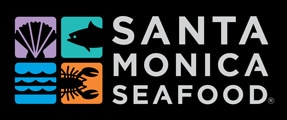Sustainability Rating:Yellow – Good Alternative (USA; all catch methods) Yellow – Good Alternative (Mexico; handline) Red – Avoid (Mexico; drift and set net) What:Yellowtail (aka: Amberjack) is often mistakenly referred to as a Tuna, but is actually a member of the Jack family. Schools of Yellowtail migrate along the coastlines of California and Mexico. During the summer, schools migrate south …
Tuna, Yellowfin
Sustainability Rating:Yellow – Good Alternative What:A popular member of the tuna family, sometimes called “Ahi” When:Available Year-Round Where/How:Where: Various Locations; Hawaii How: Wild Caught Yellowfin Tuna Exclusive Hawaiian Ahi Tuna Program Grading Guide Back to Product Guide Characteristics Yellowfin Tuna, with its gorgeous red color, is often served raw or quickly seared. After it is cooked, it loses that …
Snook (a.k.a. Robalo)
Sustainability Rating: Grey-Unranked What:Snook (aka: Robalo or Sergeant Fish) has a distinct lateral line, high, divided dorsal fin, sloping forehead and a large mouth with a protruding lower jaw. This fish can be found anywhere from Central Florida to South America and the Gulf of Mexico, usually inshore in the coastal and brackish waters, along mangrove shorelines, seawalls, and bridges. When:Available …
Snapper, Vermillion
Sustainability Rating:Multiple Rankings What:The vermilion snapper or beeliner, Rhomboplites aurorubens, is a species of snapper native to the western Atlantic Ocean from North Carolina to Bermuda including the Gulf of Mexico and the Caribbean Sea to Brazil. When:Available Sporadically Year-Round Where/How:Where – USA How – Wild Caught/Longline Where – Imported How – Wild Caught/Longline Back to Product Guide …
Shrimp, Yellowleg
Sustainability Rating:Grey – Unranked Santa Monica Seafood is financially supporting a Fishery Improvement Project focused on the Gulf of California Yellowleg Shrimp fishery. You can learn more about this and other RSVP Projects by clicking here. What:Yellowleg Shrimp When:Available year-round Where/How:Where – Gulf of California (Mexico) How – Wild Caught/Trawl Back to Product Guide Characteristics Yellowleg Shrimp has …
Shrimp, Wild Blue
Sustainability Rating:Yellow – Good Alternative What:Fresh wild Blue Mexican Shrimp caught by small panga boats. Available through Special Order Only (Order by Thursday for Wednesday Delivery) Packed in 20lb cases When:Seasonal (September-March) Where/How:Where: Sea of Cortez; Gulf of California How: Wild-Caught; Drift net, Cast nets, and bottom trawl from panga boats Back to Product Guide Characteristics Boat-to-Table artisan …
Shrimp, Rock
Sustainability Rating:Yellow – Good Alternative What:A deep water shrimp harvested in Florida and Mexico that gets it’s name from its incredibly hard exoskeleton. When:Available year-round Where/How:Where – Florida, Mexico How – Wild caught, mid-water trawl Back to Product Guide Characteristics Rock shrimp are firm and lean with a distinct sweet flavor that some compare to spiny lobster. Cook these …
Shrimp, Ceviche Cut (Raw)
Sustainability Rating:Multiple Ratings What:Ready-to-cook wild-caught Mexican Shrimp for ceviche dishes and other shrimp dish applications. When:Available Year-Round Where/How:Where – Mexico How – Wild-caught Back to Product Guide Characteristics For Your Menu If your guests are looking for a light and refreshing appetizer, then Shrimp ceviche is it! This easy-to-make dish served with diced avocado, tomato, jalapeño peppers, and …
Seabass, White
Sustainability Rating:Yellow – Good Alternative What:This tasty fish is the largest member of the croaker family and is a local California favorite! When:Available year-round from US, Mexico and South America; Seasonal from California Where/How:Where – Pacific (US, Mexico and South America) How – Wild caught; drift net Back to Product Guide Characteristics White Seabass is mild …
Scallops, Bay
Sustainability Rating:Green – Best Choice What:Smaller than their “cousins” the Sea Scallop, Bay Scallops are the edible muscle inside the fluted scallop shell. When:Available year-round Where/How:Where – Mexico How – Wild harvested; dredge Back to Product Guide Characteristics 60 to 80 ct. bay scallops are small but tasty! Mild and sweet, these lean little meats are firm and moist …
